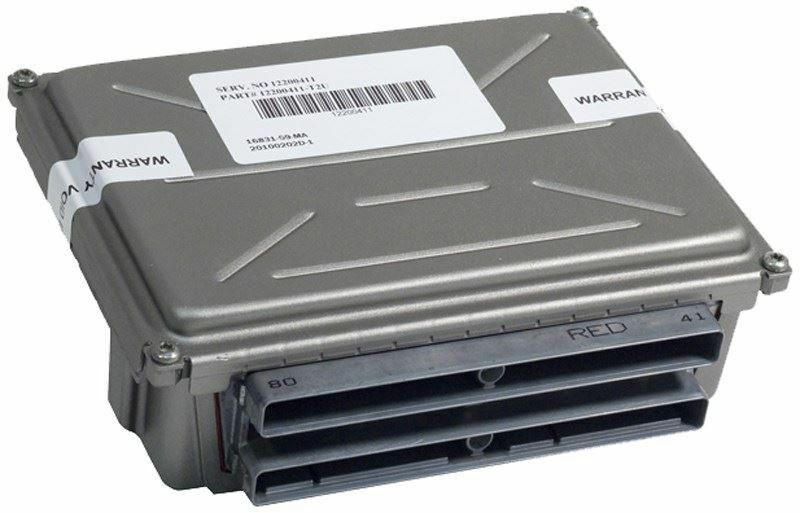Restore Peak Performance to Your Vehicle with a VIN-Programmed PCM
Is your Oldsmobile Silhouette or another GM vehicle suffering from frustrating, hard-to-diagnose issues? An erratic check engine light, poor fuel economy, stalling, or harsh shifting can often be traced back to a single component: a failing Powertrain Control Module (PCM). As the brain of your vehicle’s engine and transmission, when the PCM falters, it can create a cascade of problems. This replacement PCM, part number 12209614, is the definitive solution to restore your vehicle’s reliability and drivability.
Unlike generic modules that require an expensive trip to the dealership for programming, this unit arrives at your door ready for installation. We flash it with the latest GM software updates, specifically tailored to your vehicle using the VIN you provide. This critical step ensures perfect communication with your vehicle’s systems, including the anti-theft system (Passlock/VATS), transmission controls, and emissions equipment. This is the most reliable way to get your car back on the road without extra hassle or hidden costs.
A Technician’s Notebook: The Ghost in the Machine
I remember a 2002 Pontiac Grand Am that came into my shop with a whole list of complaints: the transmission would randomly slam into gear, the engine would stumble at idle, and the check engine light was on, of course. The owner had already replaced the throttle position sensor and a mass airflow sensor at another shop with no luck. When I hooked up my scanner, I saw a DTC that I’ve come to associate with these specific GM platforms: P0601 – Internal Control Module Memory Check Sum Error. This code is a direct indictment of the PCM itself. The internal processor was failing, causing it to send corrupted data to the rest of the car. We installed one of these VIN-programmed PCMs, and it was like a new car. All the phantom issues vanished. It’s a perfect example of how one part can solve a dozen symptoms.
Common Signs of a Failing PCM
If you’re experiencing any of the following, a faulty engine computer could be the culprit. Replacing your 2001-2002 Silhouette PCM can be the solution.
- ✔ Persistent Check Engine Light (CEL)
- ✔ Diagnostic Trouble Codes (DTCs) related to internal module failure, such as P0601, P0602, or P0606
- ✔ Unexplained drop in fuel mileage
- ✔ Engine stalling, stumbling, or hesitating during acceleration
- ✔ Harsh or erratic automatic transmission shifting
- ✔ Vehicle fails to start, even with a good battery and starter
- ✔ Failure to pass state emissions testing
A Straightforward Guide to Installation
Installing your new PCM is a manageable job for a DIY enthusiast. By following these steps, you can save on expensive labor costs. The location for the 2001-2002 Silhouette PCM is typically in the LH (driver’s side) engine compartment, often attached to the air filter housing.
- Safety First: Disconnect the negative terminal from your vehicle’s battery and secure it away from the post to prevent accidental contact.
- Locate the PCM: Find the existing Powertrain Control Module in the engine bay. It’s a metal box with several large electrical connectors.
- Disconnect the Connectors: Carefully release the locking tabs on each wiring harness connector and pull them straight out from the module. Avoid pulling on the wires themselves.
- Remove the Old Module: Unbolt the old PCM from its mounting bracket. Keep the hardware, as you may need to reuse it.
- Install the New PCM: Mount your new, pre-programmed PCM onto the bracket and secure it with the bolts.
- Reconnect Everything: Firmly plug the wiring harness connectors into the new module until they click into place. Reconnect the negative battery terminal.
- Final Step: In some cases, a security relearn procedure may be necessary. This simple process typically involves turning the key to the ‘ON’ position for 10-15 minutes and can be done without special tools. Instructions are readily available online for your specific model.
Verified Vehicle Compatibility
This module is a direct replacement for part number 12209614 and is also compatible with 12202600 and 09360210. It is guaranteed to fit the following GM vehicles:
- Alero: 2001-2003 (3.4L)
- Aurora: 2001-2002 (3.5L)
- Aztek: 2001-2003
- Century: 2001-2002
- Grand Am: 2001-2003 (3.4L)
- Grand Prix: 2001-2003 (3.1L)
- Impala: 2001-2003 (3.4L)
- Intrigue: 2001-2002
- Lumina Car: 2001
- Malibu: 2001-2003
- Montana: 2001-2002
- Monte Carlo: 2001-2003 (3.4L)
- Regal: 2000-2002
- Rendezvous: 2002-2003
- Silhouette: 2001-2002
- Venture: 2001-2003
Why do I need to provide my VIN?
Why do I need to provide my VIN?
Your Vehicle Identification Number (VIN) is essential because it allows us to program the PCM with the exact software your vehicle requires. This includes specifications for the engine, transmission, anti-theft system, and any factory options. This ensures the module works perfectly right out of the box.
Is this part difficult to install?
For most of the listed vehicles, the PCM is easily accessible in the engine compartment. The installation is a straightforward unbolt-and-unplug process that a confident DIYer can typically complete in under an hour with basic hand tools. Please see our installation guide above.
Will this fix my check engine light?
If the check engine light is caused by an internal PCM failure (like DTC P0601), then yes, this part will resolve the issue. However, if the light is on due to a faulty sensor or other component, that separate issue will still need to be addressed.
What’s the difference between a PCM and an ECM?
The terms are often used interchangeably. ECM (Engine Control Module) typically controls only engine functions. A PCM (Powertrain Control Module) is more integrated and controls both the engine and the transmission. This part is a PCM.
Do I need to do a security relearn after installation?
Because we program the module to your VIN, the security system is often ready to go. However, on some GM models, a simple, tool-free security relearn procedure may be required. This usually involves leaving the key in the ‘ON’ position for 10-15 minutes.



